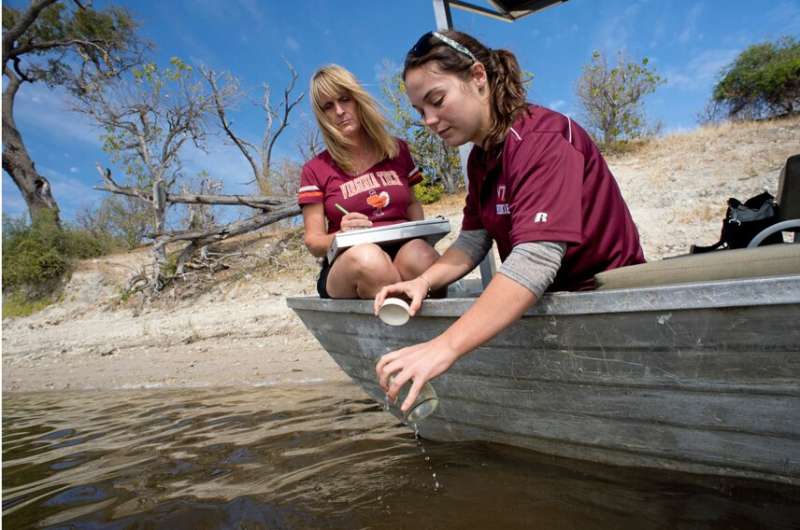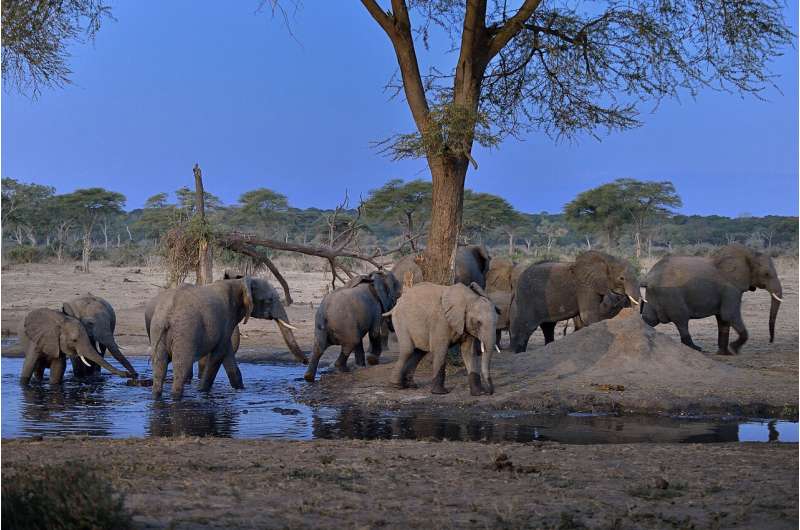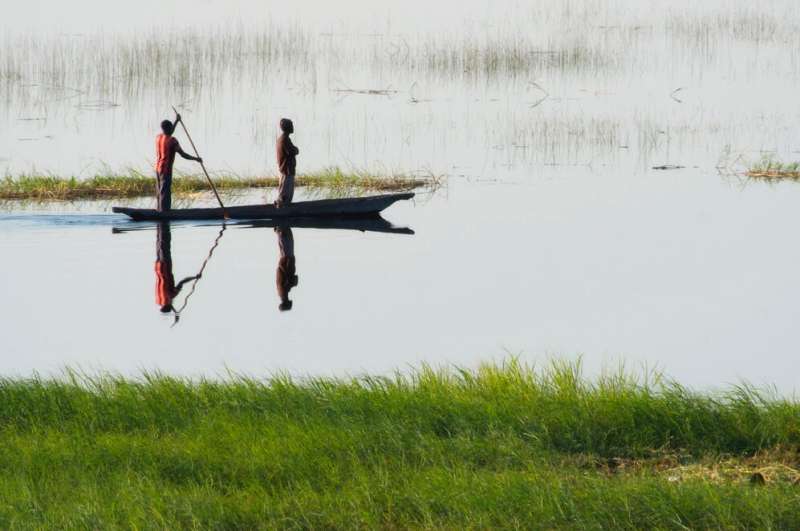Researchers develop predictive tools to tackle childhood diarrheal disease outbreaks

In 2006, more than 400 children under the age of 5 died during an outbreak of diarrheal disease in Botswana. In what was a 25-fold increase in diarrheal disease mortality for this age group, citizens of the country were devastated.
For 10 years, Kathy Alexander, a professor of fish and wildlife conservation in the College of Natural Resources and Environment at Virginia Tech and the founder of Conservation of African Resources: Animals, Communities, and Land Use (CARACAL), has been researching similar diarrheal disease outbreaks at a national level to determine if there are correlations between certain atmospheric conditions, local environmental variables, and diarrhea rates in the Chobe District of Botswana.
With the help of Jeffrey Shaman, of Columbia University, and Alexandra Heaney, of the University of California Berkeley, Alexander discovered an astonishing and robust link between environmental change and environmental dynamics, which ties human health to the health of the ecosystem. With this knowledge, researchers will be able to predict when diarrheal disease will reoccur.
Their findings were recently published in Nature Communications.
When observing previous studies in Botswana, Alexander learned that certain weather conditions coincided with diarrheal disease rates in Africa, but results were only limited to cholera, an infectious disease caused by Vibrio cholerae. And in Botswana, under-5 diarrhea is caused by a host of pathogens—Shigella, Salmonella, Cryptosporidium, Giardia lamblia, rotavirus, and norovirus. Accordingly, Alexander's research focused on the environmental linkages between diarrheal disease and these pathogens that are pertinent to the region.
For their study, Alexander and her collaborators looked to the Chobe District, which is home to the Chobe River, the only permanent surface water that can be found in 12,000 square kilometers. Notably, it is also the only source of drinking water for eight villages, making it a vital location for diarrheal studies.

Over 10 years, there were around 11,000 cases of diarrhea in children under 5-years-old in the Chobe District. With case reports peaking annually in the wet season and again in the dry season, researchers were able to determine that certain hydrometeorological conditions were directly responsible for these outbreaks.
El Niño-Southern Oscillation (ENSO) is an ocean-atmosphere system that causes temperature and precipitation fluctuations across the world. El Niño and La Niña are the two extremes of ENSO conditions, which alternate every three to seven years.
During La Niña, researchers found that the combination of cooler conditions and above-average rainfall contributed to increased flooding, which, in turn, increased the concentrations of organic material and diarrhea-causing pathogens within the Chobe River.
El Niño conditions had the opposite effect on the climate and precipitation of the region. With warmer conditions and lower river levels, researchers noticed that there was a unique connection to be made with sediment and the dominant animals of the region—elephants.
In a previous paper, Alexander had concluded that Chobe's elephant populations, which happen to be the highest in the world, compress along river fronts to access the only surface water within 12,000 square kilometers, the Chobe River. With such a large density of wildlife, sediment and fecal matter are carried downstream, toward the district's water treatment plants.
"If you have dirt in your water, you can't kill your bacteria. It hides in the dirt. In one day, you can have a flux of over 50 percent change in sediment levels. Couple that with poor water infrastructure and unreliable electricity going to the water pumps, and the water sits in the water pipes. And then bacteria grow in those water pipes. So, you can see, it's not usually just one thing. It's like a whole house of cards," said Alexander.

Overall, Alexander sees a long journey ahead. With its many facets, conquering childhood diarrhea is not an easy task. Although Botswana has the necessary infrastructure, advanced technology, and knowledge about water-borne pathogens, the country is still hit hard by diarrheal disease biannually. One of the first steps of disease eradication involves spreading awareness and realigning cultural and social perceptions, which can turn the tide significantly.
"Diarrhea is not a big, complicated issue," Alexander explained. "But it is, in so many ways, when you're trying to integrate cultural limitations and people's perceptions of what they need to do and what they should do, with infrastructure and what you have and what you should have, with medical facilities and what you have and what you don't have. If you've got five doctors and 20,000 people, how much can you do? What are the tools that you can use in those environments? That's what we are really working toward trying to figure out."
Alexander is an advocate of "One Health," a concept that recognizes that human health is directly proportional to the health of the environment and its creatures. One Health takes a bottom-up approach and puts education at the forefront. In fact, 12 schools within the Chobe District are taking part in a program that teaches them to take care of their environment and, ultimately, themselves.
"Education and poverty alleviation are so central to livelihoods—and livelihood is so central to health. We are trying to start early with kids, by helping them understand what the opportunities are for improved financial security and food security, as well as health. And bringing them onboard as stewards of the ecosystem. And helping to develop tomorrow's leaders," said Alexander.
And Alexander maintains that working actively and intimately within grassroots environments provides a different perspective and it is also the best way to collect data, gain new-fangled insights, and become more conscious of your interpersonal skills as a researcher who works to closely with people.
"It was a humbling experience in that you remember that no matter how much education you have, no matter how many degrees you have, you really need to stay connected to the people who have the problem," said Alexander. "What is their experience? What is their problem definition? What is the solution that they see? What do they understand is the issue?"
More information: Alexandra K. Heaney et al, El Niño-Southern oscillation and under-5 diarrhea in Botswana, Nature Communications (2019). DOI: 10.1038/s41467-019-13584-6
Journal information: Nature Communications
Provided by Virginia Tech




















